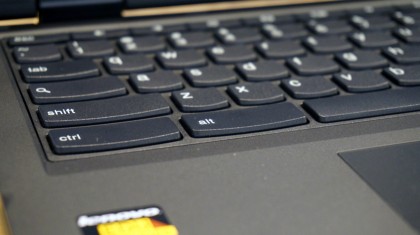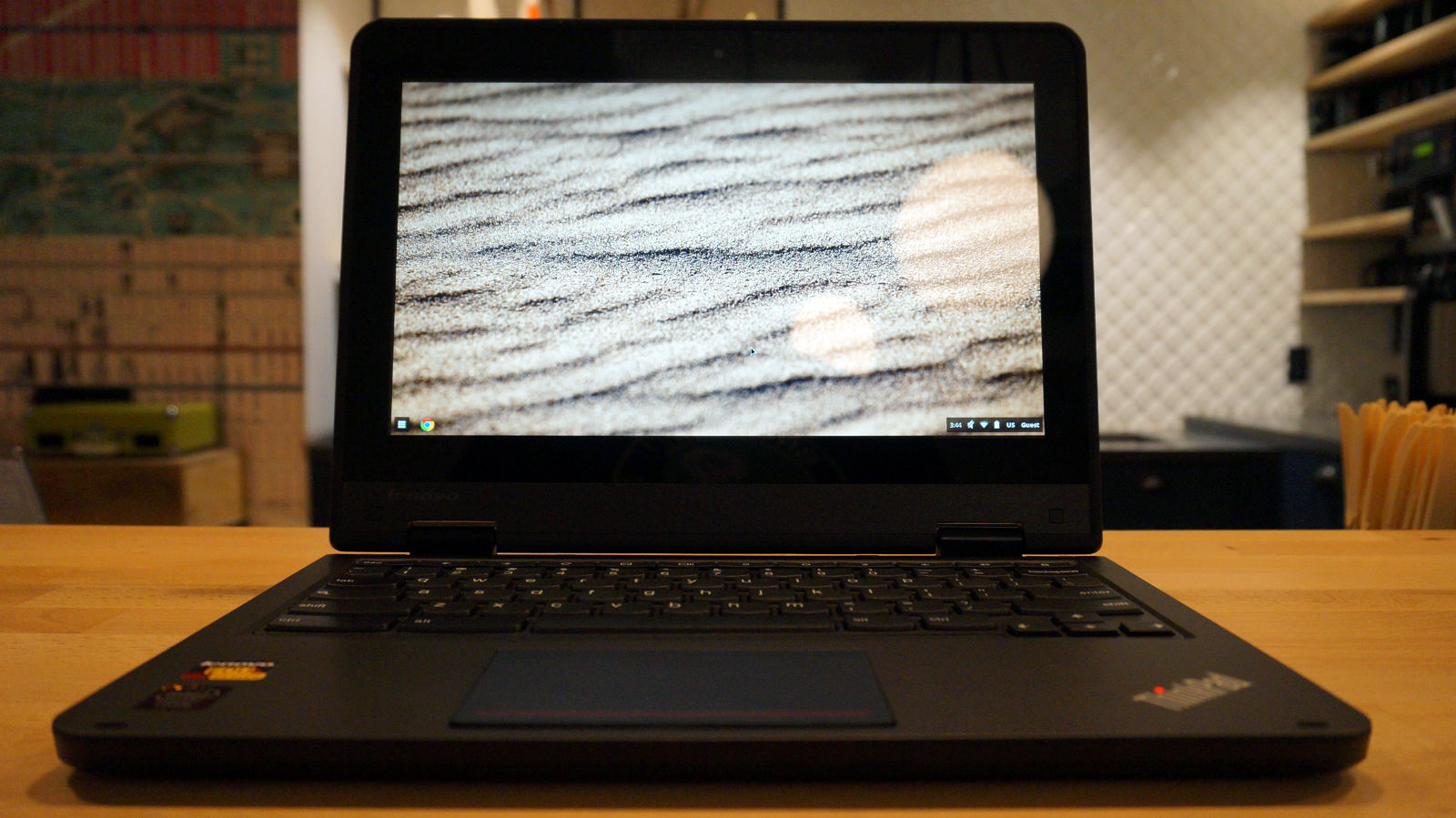Why you can trust TechRadar
The Yoga 11e's components are adequate for browsing the web, composing a document or streaming music, but trying to do all three together reveals some bottlenecks. The laptop also packs just 16GB of local storage, but almost nothing in Chrome OS needs to be saved locally.
Here's what was packed into the unit sent to TechRadar:
Spec sheet
- CPU: 1.83GHz Intel Celeron N2930 (quad-core)
- Graphics: Intel HD Graphics
- RAM: 4GB DDR3 (1,333MHz)
- Screen: 11.6-inch, 1,366 x 768 HD LED with anti-glare
- Storage: 16GB SSD (eMMC)
- Ports: HDMI 1.4, USB 3.0, USB 2.0, 4-in-1 card reader
- Connectivity: Intel 7260 802.11ac (dual-band), Bluetooth 4.0
- Camera: 720p HD webcam
- Weight: 3.3 pounds
- Size: 11.81 x 8.5 x 0.87 inches (W x D x H)
The Lenovo N20p Chromebook and Toshiba Chromebook 2 use nearly identical components – both feature an Intel Celeron chip, 4GB of memory and just as little storage. The Toshiba packs a slightly less punchy dual-core Intel Celeron N2840, while the N20p ships with either an Intel Celeron N2830 or matching N2930.
Performance
Again, multitasking is where this Chromebook runs up against its limited hardware. As I worked in Google Docs while listening to Spotify with a dozen other tabs open, for example, the audio occasionally stuttered. Worse even, I periodically noticed a half-second delay after pressing on the arrow keys.
Bright, bold and barely HD
Thankfully, the Yoga 11e's 11.6-inch, 1366 x 768 touchscreen delivers bright and crisp visuals. Colors popped when I watched HD video on Netflix and Hulu, and text looked sharp on The New York Times website. However, the viewing angles are a bit shallow. When I moved more than a foot to either side of the screen, colors began to wash out.

The touchscreen responded promptly to my input, and I had no problem using pinch-to-zoom to change the magnification. As I mentioned earlier, however, Chrome OS was clearly designed with the touchpad in mind. I anticipate that most users will spend their time in laptop mode rather than in tablet, tent or stand mode, which rely on the touchscreen.
Surprisingly sound tweeters
The notebook's rear-facing speakers pump out surprisingly loud and well-balanced audio. When I listened to the score of The Nutcracker, Tchaikovsky's iconic melodies rang out clearly, and I didn't notice any tininess or distortion even when I cranked the volume up the maximum.
Sign up to the TechRadar Pro newsletter to get all the top news, opinion, features and guidance your business needs to succeed!
The audio sounded almost as impressive on bass-heavy songs, such as Tove Lo's "Habits." That said, the low end sounded a bit weak.
Unsurprisingly stellar inputs
I've come to expect an outstanding typing experience when using a ThinkPad, and the Yoga 11e doesn't disappoint. The smile-shaped, island-style keys offer plenty of vertical travel and tactile feedback, and the textured surface makes it easy to touch type. Lenovo reduced the gap between keys to make it harder for children to pop them off the keyboard, but the spacing remains generous enough that I rarely made adjacent-key errors.

The touchpad is large and responsive. I could easily scroll using two fingers, and the cursor accurately tracked my finger's movement across the pad's smooth surface. As with most Chromebooks, the Yoga 11e lacks a right mouse button, but you can tap with two fingers simultaneously to open the right-click menu.
Short lived (for a Chromebook)
While impressive for a laptop, the Yoga 11e's battery life falls short of competing Chromebooks. With the brightness at 30 percent, a dozen tabs open and streaming music to headphones, the notebook lasted 6 hours and 21 minutes. By contrast, the Toshiba Chromebook 2 lasted 6 hours and 26 minutes, while the Lenovo N20p ran for a whopping 8 hours.
Current page: Performance, specs and features
Prev Page Introduction, design and features Next Page Verdict